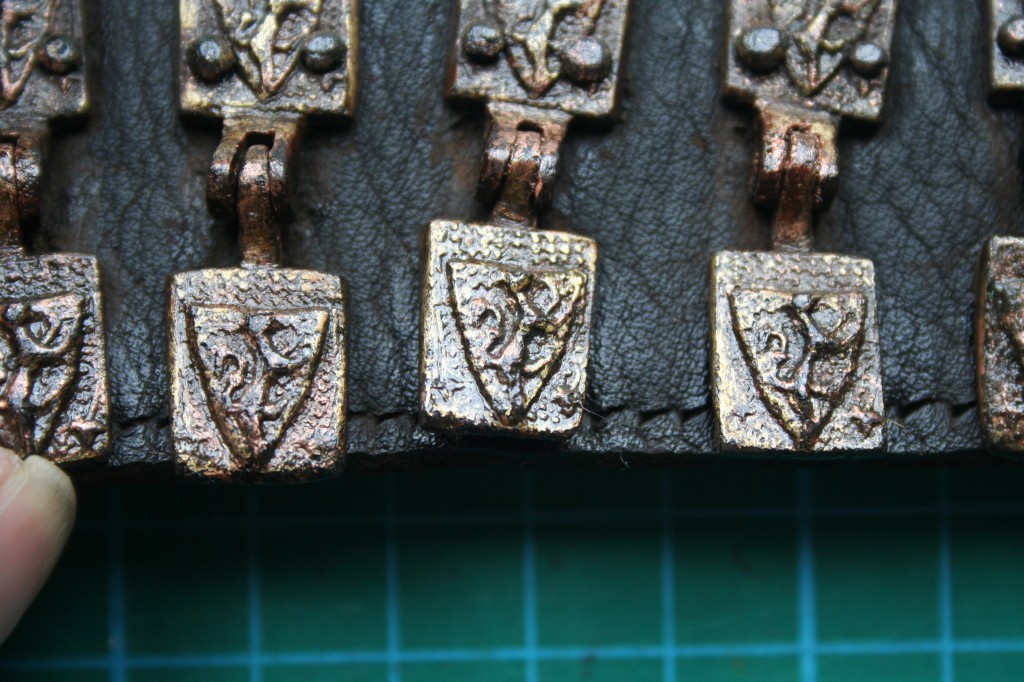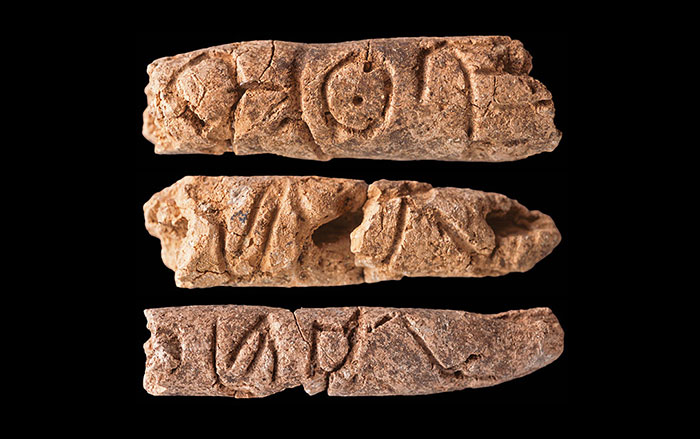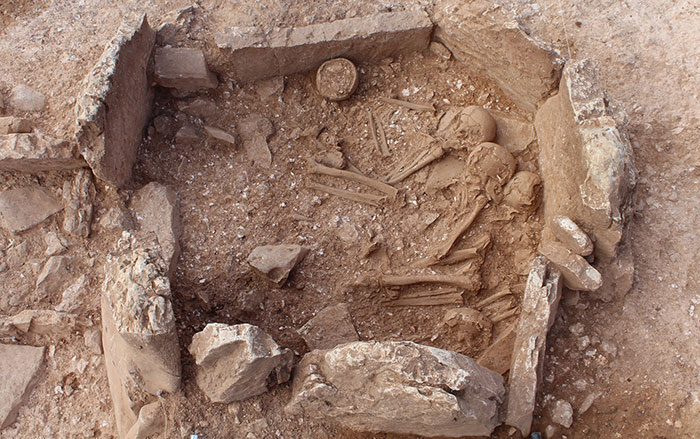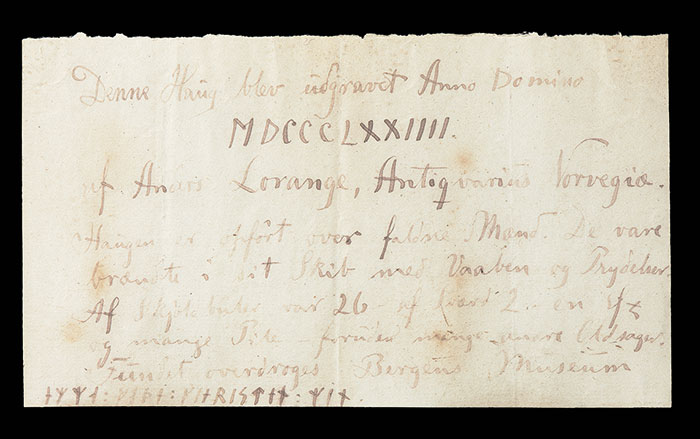
COUNTY CORK, IRELAND—Conservation of a piece of leather retrieved from a well located at Caherduggan Castle has shown that it is an intact breast strap from a horse’s harness. Called a peytrel, the fitting, which dates to the thirteenth or fourteenth century, is covered in hinged, gilded mounts and pendants decorated with heraldic symbols. There are buckles at either end. “Post-excavation analysis has revealed it is the only intact example ever found in Britain or Ireland and it may have belonged to a medieval knight or one of his retainers or retinue. It certainly belonged to someone important in the medieval period. This is a hugely significant find in Ireland,” said archaeologist Damian Shields. Other finds from the well include bone gaming dice and a woman’s shoe.










